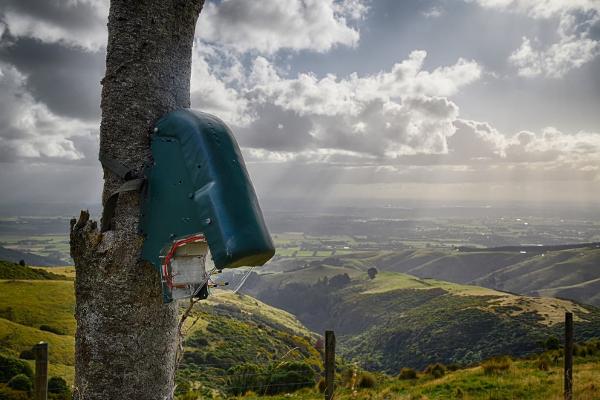Ground-breaking automated species-specific AI traps move closer to commercial production
Thursday 17 August 2023, 10:24AM
By Predator Free 2050
431 views
Potential unwanted impacts to our prized taonga species such as kea and kaka is a critical concern when controlling invasive predators in many parts of Aotearoa. However, this is all set to change.
Field trials are underway on revolutionary predator control traps based on ground-breaking artificial intelligence (AI). The fully automated Critter Solutions Kill Traps trigger only when a target has been identified by AI as a pest species. Importantly, the traps are ultra-low power, self-resetting, and self-luring - designed to be left in the field for long periods without servicing.
Project lead Dr Helen Blackie from Boffa Miskell describes this innovatively designed, next generation of AI traps as the "holy grail for pest eradication and a game-changer, not only for Aotearoa, but worldwide".
"These traps are the first to be able to effectively ‘think for themselves’ and make a decision as to whether an interacting animal is a target pest species or not. A key technical success has been developing the trap so that it is extremely fast at triggering when an animal is recognised - within a fraction of a second - after detecting the presence of a pest," Dr Blackie says.
"Importantly, using AI to trigger traps means that the trap design can be far more open, as we’re not trying to stop other species from entering. This makes the trap far more appealing for pests to go into, as we haven’t had the same restraints on design. Traditional traps also require the pest to push, pull or stand on a trigger to activate the trap, which can further reduce catch-rates, by using AI we can do away with manual triggers completely."
The traps are also able to remotely notify a user that it has triggered and can send a picture of the animal it’s triggered on.
"This is the first time I’ve been able to run a trial from the comfort of my couch," says Dr Blackie. "We use our AI monitoring cameras trained on the traps which show us the approaching species in real-time, then we get a notification of the trap triggering, which species it was and a further notification that the trap has reset and is ready and waiting for the next animal."
The traps have already passed requirements for delivering a humane kill for rats, stoats and possums in independent trials. As well as controlling pest species, the device can also be used in a ‘passive’ mode to collect monitoring data on native species.
Critter Solutions Director Kenji Irie says: "We have applied 20 years of animal trapping knowledge and spent five years working on the generation of a robust AI system for this specific idea, and we are now excited to be testing the tool in the field.
"We have enough data from the first field trials already to prove the trap’s effectiveness for possums, which is hugely exciting. Every time the fully automated trap has identified a possum and triggered has resulted in a successful kill. In our first night testing in the field the trap had recognised and killed its first possum within an hour, and then its second a few hours afterwards, highlighting the benefit of the open design of the trap to increase animal interaction rates, which was very exciting for the research team.
Funding from Predator Free 2050 Limited through the Government’s Jobs for Nature initiative in 2021 has helped to speed up the development of this game-changing technology.
Predator Free 2050 Limited’s Professor Dan Tompkins, who leads the Products to Projects portfolio, couldn’t be more pleased with the outcomes of the research and development. "We want to ensure that achieving national eradication of rats, mustelids and possums, the Predator Free 2050 goal, is carried out in the best way possible. Reducing impacts to non-target species is a critical part of that.
"The Predator Free 2050 mission was launched knowing that new tools and approaches would be needed to get the job done, and this is one of many great advances that we are already seeing. The quality of this new trap combined with the speed and accuracy of the AI species identification makes this innovation at its finest."
An immense amount of work has gone into ensuring the device can reliably identify even small details of non-target species including kea, kaka, weka and kiwis, from thousands of animal interactions with the prototype units.
Critter Solutions Ltd has already started to receive international attention from as far as the United Kingdom where there has been no control tool that can easily distinguish a native red squirrel from the introduced grey squirrel (red squirrels are at risk of local extinction due to the grey invasion).
The Critter Solutions Species Specific Kill Trap is expected to be ready for sale by late 2024.
